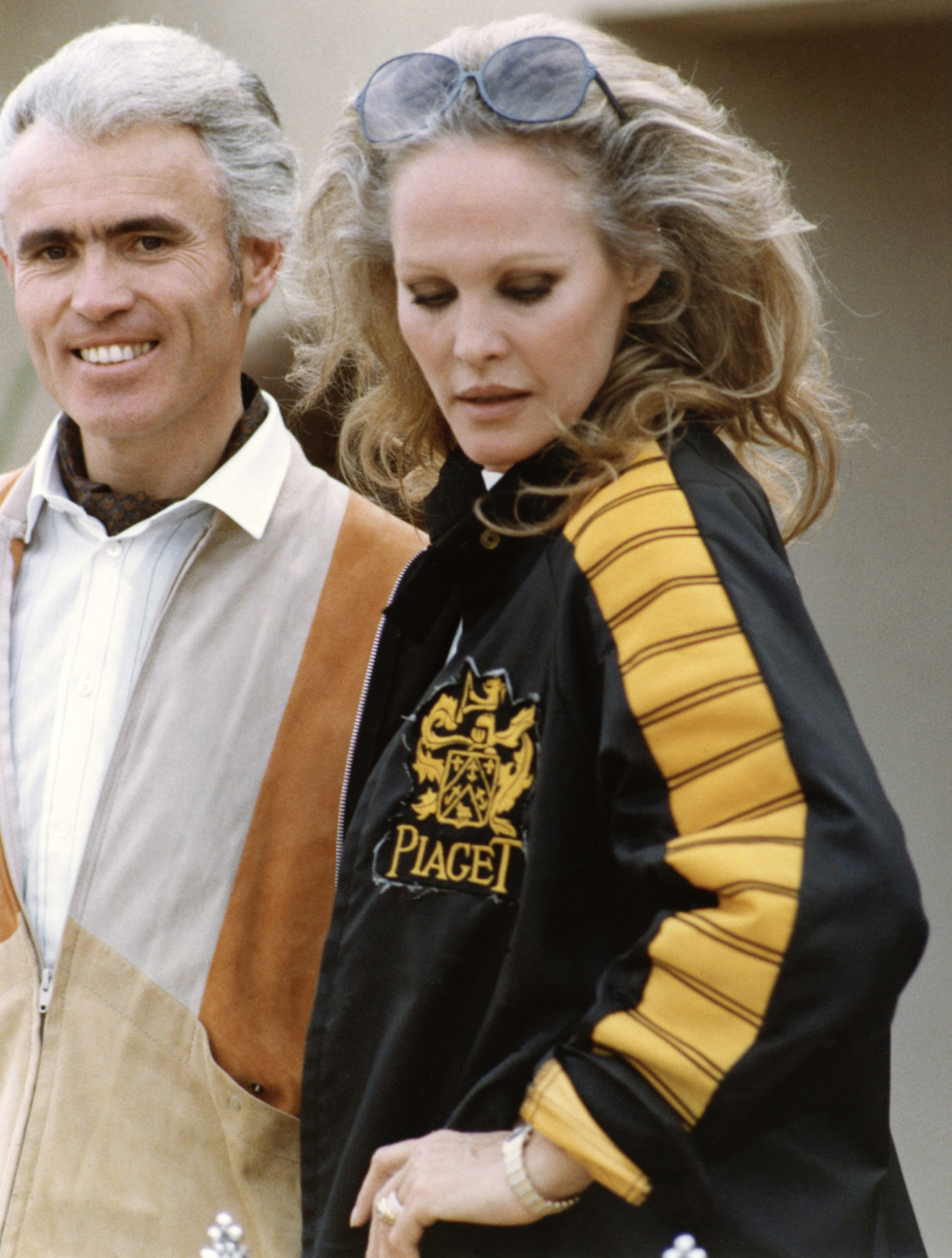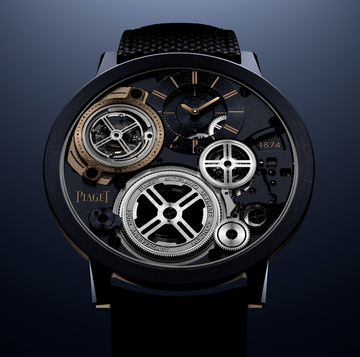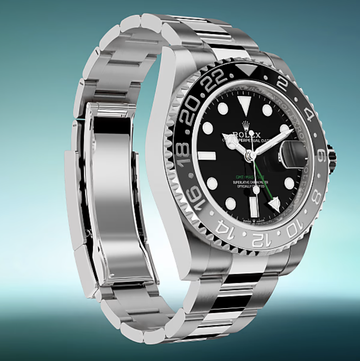Sports watches are often sold on some pretty hifalutin claims.
Diving watches that can dive deeper than any human being. Racing watches with Brands Hatch-proven G-force resistance. A chronograph that’s been to the Moon.
Piaget’s Polo, on the other hand, was a sports watch with an intent it was easier to get behind. The Polo arrived in 1979 and was a product of its times. Despite its name, it was not designed to be worn while playing polo.
It was designed to be worn while watching polo – preferably in the VIP enclosure, sipping champagne and generally congratulating yourself on how sweetly life had turned out.
“Mr Piaget felt that the clientele that used to attend polo was really the clientele he wanted to target,” Jean-Bernard Forot, Piaget’s current head of patrimony tells Esquire, via Teams.
“The family was already strong in dress watches, very thin watches for males and females. Those collections really fitted the lifestyle of our European clientele. Italy, Austria, France, Switzerland, Germany. But Mr. Piaget used to travel a lot to the US, which had a more casual approach to luxury. More sporty – living under the sun in California, where the wealth are concentrated.”
Such a clientele needed a wristwatch appropriate to their lifestyle. While Audemars Piguet and Patek Philippe had already made in-roads into the emerging ‘luxury sports watch’ market, with their Royal Oak and Nautilus respectively, these big-ticket items were made of mere steel. Piaget’s Polo was solid gold. And not just the watch, but the bracelet it was attached to.
“The concept was ‘the most expensive watch in the world’,” explains Forot.
“Mr Piaget used to say ‘It’s more of a bracelet with a watch, than a watch with a bracelet’. People would say ‘Oh, you’re wearing Piaget, in the same way they might say ‘Ah, you’re wearing [a] Chanel [dress].”
Today Piaget is still better known for its jewellery than its watches. But that is beginning to change.
“When Timothée Chalamet started wearing that tiny little Cartier Tank Panthère [a more typically feminine dress watch, and a style worn by the actor in 2023], it started to feel like it was following through to Piaget,” says Christy Davis, founder of UK-based preowned watch specialists Subdial.
“Their stone dials feel like the next trend. They’re a super-interesting brand because they were always unashamedly, unapologetically for the elite. It tended to be royalty, celebrities and a lot of South American customers. They really spoke of 1980s luxury and were so flashy that they fell out of fashion – but that fashion is coming back.”
Which is why, after a couple of years of speculation, following the red-hot demand for the Royal Oak and the Nautilus, Piaget is rereleasing its original gold-on-gold Polo on February 6.
“The original all-gold Polo is iconic,” says Eric Wind, of Florida-based dealers Wind Vintage. “Rereleasing it is a super-smart move. It’ll be one of the hottest watches of this year.”
At £69,000 the 2024 version will have lost little of its exclusivity. Still, one has to ask: given the current economic uncertainly and general global mayhem… isn’t it the right time for the comeback of a solid gold watch (and bracelet)?
“If we were launching this watch in huge volumes, then probably you are completely right,” says Forot. “But we have initially made just 79, in reference to the original year. And the way we approach our clientele is to make them discover [our watches] one-to-one, in private meetings. Piaget is not a brand everybody knows, because it is not as big as [Louis] Vuitton or Rolex. But there are many niches of people.
“At some of the maison it would make no sense. At Piaget it makes sense."
"It is a very Piaget approach.”













